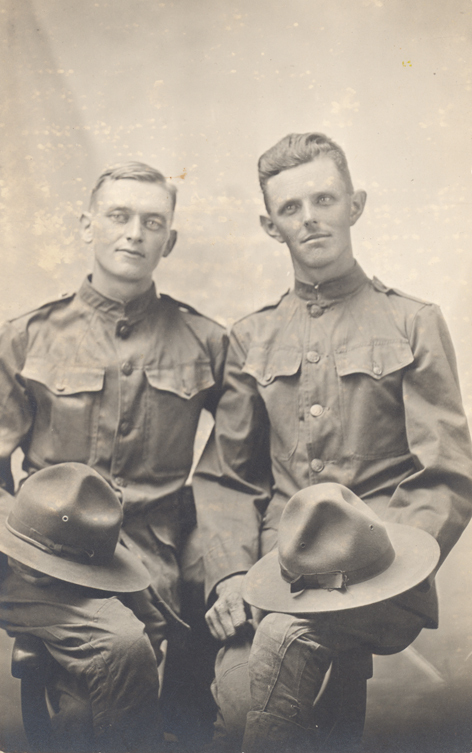Denmark — America's Smallest and Biggest Ally
This exhibit is no longer on display.
Exhibition Type
temporaryShare this Exhibition
The year 2017 marks significant centennials for American history. Widely known and commemorated is the centennial of the United States’ entry into World War I. Less known is the transfer of the Danish West Indies in U.S. possession, now known as the U.S. Virgin Islands. What led up to the transfer of that territory? How have the two nations cooperated in peace and conflict in the 100 years since? To explore the larger context of geo-political relations between Denmark and the United States, the Museum of Danish America is creating a temporary exhibition called Denmark — America's Smallest and Biggest Ally. Within the story of over two centuries of bilateral relations, this exhibition will focus especially on three parts of Danish-American history that will be unfamiliar to most visitors: the transfer of the U.S. Virgin Islands; the U.S. military bases on Greenland, which is a Danish territory; and the 21st century involvement of Denmark in U.S.-led coalitions in Afghanistan, Iraq, and other sites of present conflict.
The United States and Denmark have the longest unbroken diplomatic relationship in the world, beginning in 1801. Connections between the two nations were primarily on an individual level through the 19th century, as Danes chose to immigrate to the United States and became involved in American society. Individual Danes earned a part in history through notable military achievements: Colonel Christian Febiger in the Revolutionary War; Charles Zanco who was present at the siege of the Alamo; and members of the “Scandinavian Regiment” (a.k.a. the Wisconsin 15th) who served with fellow Scandinavian immigrants in the Civil War. As Danish immigration swelled to the hundreds of thousands by the early 20th century, many Danish immigrants joined the U.S. armed forces in World War I, motivated in part by the opportunity to accelerate their naturalization process.
On a national level, the first major cooperative action was United States purchase of the Danish West Indies. The islands of St. Croix, St. John, and St. Thomas had been Danish colonies since 1672, largely used for sugar plantations. Though Denmark remained neutral during World War I, the United States feared that a possible German invasion and occupation of Denmark might lead to German control of the Danish West Indies, and therefore a German naval foothold in the western hemisphere. This possibility motivated the final negotiations and the transfer was resolved on March 31, 1917 – just days before America formally declared war on Germany.
Denmark aimed to remain neutral during the Second World War as well, but Nazi Germany invaded and occupied Denmark on April 9, 1940. The occupation of Denmark effectively cut off connection with Greenland, which was a Danish-controlled territory. The United States stepped in to establish a military presence on Greenland, beginning a U.S.-Danish military collaboration that continues to this day. Most notably is the air base at Thule, an ongoing outpost for observation. At the height of the Cold War, 30 different U.S. bases were established on different parts of Greenland.
At the close of the 20th century, Denmark began to shift away from its century-old policy of non-intervention in international conflicts. Ever since losing a significant war in 1864 to a Prussia-led alliance, Denmark had avoided direct military involvement. However, as a member of NATO, Denmark began to participate in NATO actions first in the Balkans in the 1990s. During the first Gulf War, Denmark sent a naval frigate to support the U.S. coalition; this was not a significant contribution of firepower, but marked a notable new direction in Danish foreign policy.
Immediately after the attacks of September 11, 2001, the Danish parliament approved full support of American actions. Prime Minister Anders Fogh Rasmussen developed a close relationship with President George W. Bush, and their personal relationship mirrored the military alliance between the two nations. Danish armed forces were full participants in Afghanistan and Iraq, and the casualty numbers provide evidence of their presence on the front lines; Denmark has suffered more casualties per capita than any other coalition partner. It was Prime Minister Fogh Rasmussen who referred to Denmark as “America’s largest and smallest ally.” He would later serve as the Secretary General of NATO from 2009-2014.
In recent years, Danish and American armed forces have cooperated in their respective homelands as well. The Danish Home Guard and the U.S. National Guard have participated in joint training sessions in both countries. For example, in 2016 two civil engineering squadrons worked together in Flandreau, South Dakota, to improve access to Santee Sioux powwow facilities, gaining experience with heavy equipment used for clearing brush and tree limbs. Danish soldiers in combat have often been treated at U.S. military hospitals, and the Danish medical community looks to American counterparts for advice on how to treat PTSD and brain injuries that are often the result of contemporary warfare. In 2017, Danish veterans will be the first foreign soldiers to participate in a USO-sponsored Warrior Week, providing wounded veterans the opportunity to participate in various therapeutic and recreational activities (adaptive surfing, skydiving, kayaking, etc.), providing the psychological boost to overcome other physical barriers in daily life.
Denmark is just one of the many nations that have been closely allied with the United States in recent conflicts, and – like many other allied nations – rarely gets media coverage of their participation. Even Americans of Danish descent are likely unaware of the important areas of cooperation over the past century. From stories of Danish Americans in U.S. armed forces to stories of current Danish active duty military and veterans, this exhibition seeks to raise awareness and interest in the many ways that two nations can relate to one another.
This exhibition is supported in part by a grant from Humanities Iowa and the National Endowment for the Humanities.
